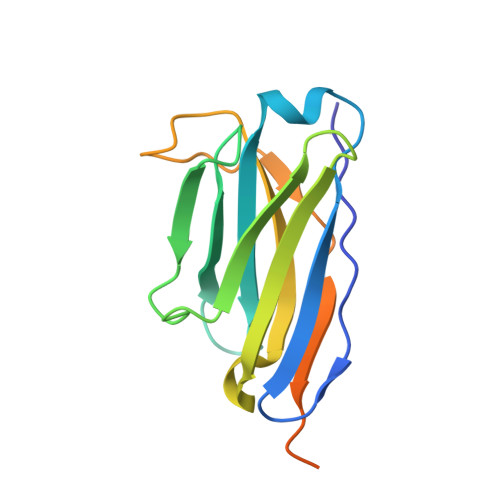A topological switch in CFTR modulates channel activity and sensitivity to unfolding.
Scholl, D., Sigoillot, M., Overtus, M., Martinez, R.C., Martens, C., Wang, Y., Pardon, E., Laeremans, T., Garcia-Pino, A., Steyaert, J., Sheppard, D.N., Hendrix, J., Govaerts, C.(2021) Nat Chem Biol 17: 989-997
- PubMed: 34341587
- DOI: https://doi.org/10.1038/s41589-021-00844-0
- Primary Citation of Related Structures:
6ZE1 - PubMed Abstract:
The cystic fibrosis transmembrane conductance regulator (CFTR) anion channel is essential to maintain fluid homeostasis in key organs. Functional impairment of CFTR due to mutations in the cftr gene leads to cystic fibrosis. Here, we show that the first nucleotide-binding domain (NBD1) of CFTR can spontaneously adopt an alternate conformation that departs from the canonical NBD fold previously observed. Crystallography reveals that this conformation involves a topological reorganization of NBD1. Single-molecule fluorescence resonance energy transfer microscopy shows that the equilibrium between the conformations is regulated by adenosine triphosphate binding. However, under destabilizing conditions, such as the disease-causing mutation F508del, this conformational flexibility enables unfolding of the β-subdomain. Our data indicate that, in wild-type CFTR, this conformational transition of NBD1 regulates channel function, but, in the presence of the F508del mutation, it allows domain misfolding and subsequent protein degradation. Our work provides a framework to design conformation-specific therapeutics to prevent noxious transitions.
- SFMB, Université Libre de Bruxelles, Brussels, Belgium.
Organizational Affiliation:




















